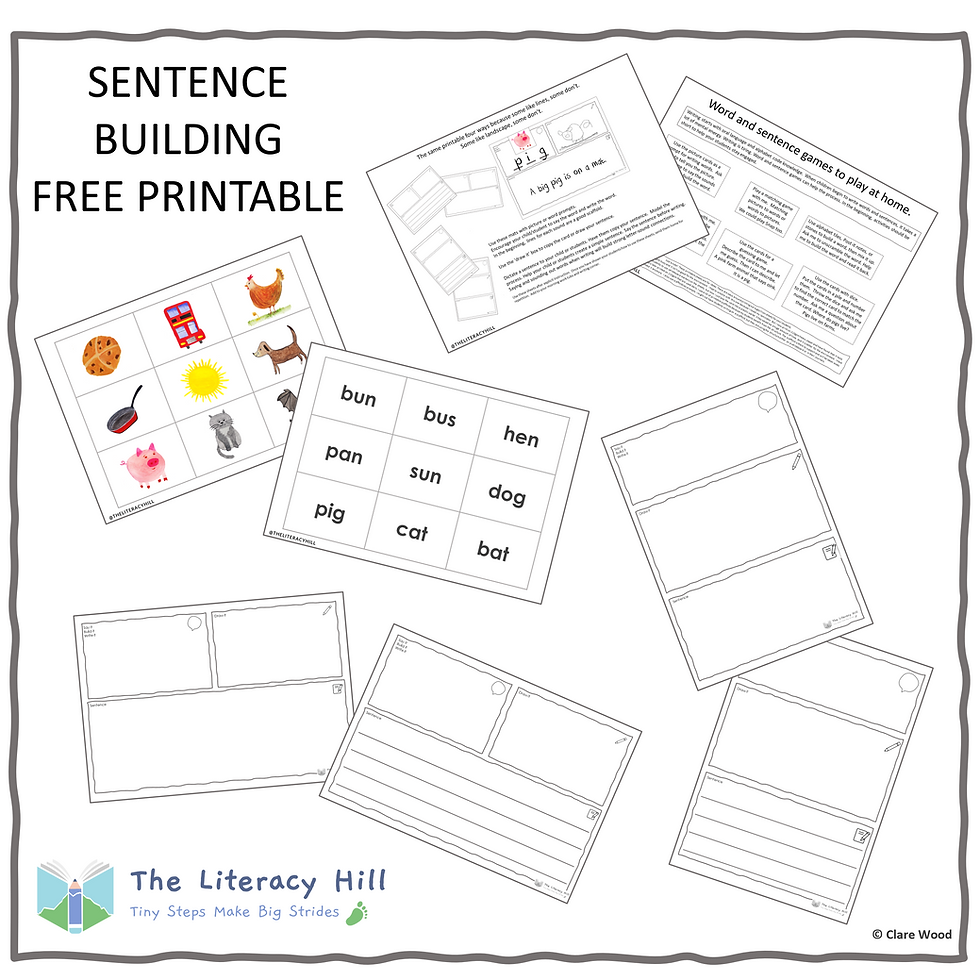LEARNING THE ALPHABET
- Developers Devzmelbourne

- Sep 5, 2022
- 4 min read
Which letters should I teach first? I hear this all the time. If you think about it, when we teach the alphabet we are unlocking the code within to build meaning. Teaching the alphabet from A-Z may seem like an excellent idea because it has an order. It even has a song! The thing is, you can’t do much with the first six letters of the alphabet. Read on to find out why teaching a set sequence is best.
The first six letters of the alphabet don’t yield many words. If we teach groups of frequently used letters that yield lots of words, children can quickly build words, and suddenly the squiggles on the page mean something.
Long before we teach reading, we should expose children to print, letters and sounds in a playful way.
We shouldn’t rush this step because all this exposure and time spent reading and playing with language will reap huge rewards when a formal learning program starts.
Activities such as sound and letter hunts and looking at the letters in names are the perfect way to introduce letters and the concept of print. Painting letters, using Playdough, writing in sand or shaving foam and using alphabet games are all brilliant playful ways to build a literacy-rich environment in the preschool years. I did lots of activities like these with my own children and they are glorious fun. However, this is not learning to read, this is playful exposure.
Teaching the skill of reading needs a systematic approach, so it all makes sense.
Teaching reading needs to be:
Little and often
Hands-on
Free of busy worksheets
At an appropriate time
Engaging
It doesn’t mean that instruction has to be boring. If it is boring – you are doing it wrong!
It’s a myth that phonics is boring…decodable books are boring. NOT TRUE. Children feel empowered when they can read a text and decodable books are a great scaffold to help children quickly become fluent readers. Check out my favourites here.
Children also need engaging resources and a knowledgeable teacher.
Starting with a group of letters that yield lots of words helps students to see how letters map to sounds.
I use s a t p i n as the first 6 letters I introduce in my clinic. These 6 letters can make over 20 CVC words.

There are various programs that advocate differing letter sequences.
All sequences start with similar common letters.
The sequence I use is very similar to Letters and Sounds. I don’t teach the digraph ‘CK’ until the A-Z sequence has been covered. We work on blending and segmenting skills through to words of CCVCC level and continually use our review time to recap past sounds and letters as we work on adjacent consonants and double letters — ff, ll, ss, zz in teaching time. Once children can ably blend and segment, we move on to common consonant digraphs, vowels and consonants using the resources and activities in my Reading and Spelling Toolkit.
s a t p i n m d g o c k e u r h b f l q v j w x y z
s a t i p n c k e h r m d g o u l f b ai j oa ie ee or z w ng v oo y x
m a s d t i n p g o c k u b f e l h r j v y w z x
a i m s t n o p b c g h d e f v k l r u j w z x y ff ll ss zz
s a t p i n m d g o c k ck e u r h b f, ff l, ll ss, j, v, w, x , y, z, zz, qu
A splendid choice for intervention if your student has difficulties or complex needs.
s a t p i n m d g o c k e u r h b f l j v w x y z
Carnine
a m t s I f d r o g l h u c b n k v e w j p y T L M F D I N A R H G B x q z J E Q
Word building activities are a great multisensory way to develop the sound-symbol correspondence needed for fluency. The best part is if you need extra letters, you just print more. You can find the movable alphabet I use all the time over in the shop. A free basic or initial code alphabet is available in my free stuff area here.
A movable alphabet is a great scaffold for writing. A movable alphabet doesn’t replace writing.
It is not unusual for a child to forget or confuse some sounds and letters when they learn to read.
In the beginning, your child needs to know that the stuttered process of sounding out is reading in its early stages. Decodable books, word building activities, and a daily read aloud to enrich vocabulary is a brilliant start. To find out about the best beginner books, click here.
Use a sequence, build words and have fun with sounds, letters and words. These activities will engage your students a lot more than a bunch of worksheets and in time will flourish.
For more fun activities, head over to an earlier post full of playful activities that will help you have an engaged classroom or a fun-filled home learning experience.
Further reading
Carnine, D. W., Silbert, J., & Kameenui, E. J. (1997). Direct instruction reading (3rd ed.). Upper Saddle River, NJ: Merrill/Prentice-Hall.







Comments